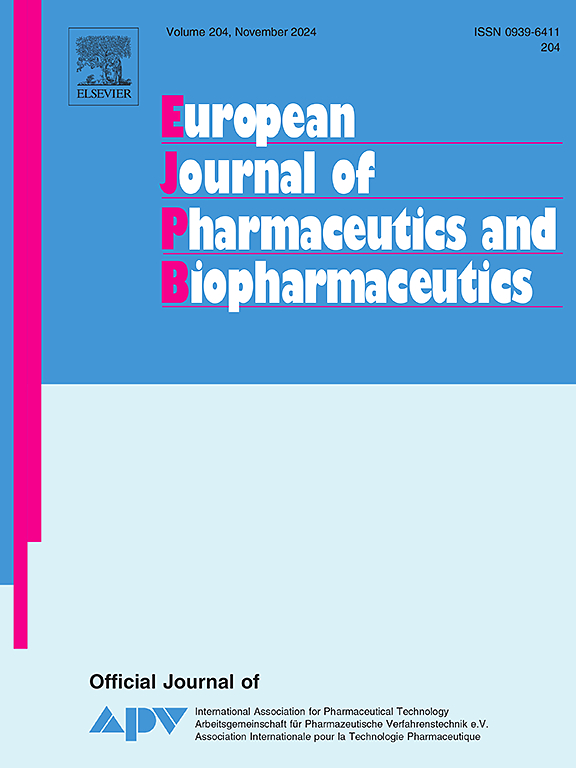Towards a digital twin of primary drying in lyophilization using coupled 3-D equipment CFD and 1-D vial-scale simulations
IF 4.4
2区 医学
Q1 PHARMACOLOGY & PHARMACY
European Journal of Pharmaceutics and Biopharmaceutics
Pub Date : 2025-02-05
DOI:10.1016/j.ejpb.2025.114662
引用次数: 0
Abstract
A digital twin of lyophilization units was developed to facilitate the scale-up of the lyophilization process from the laboratory to the commercial scale. Our focus was on ensuring successful technology transfer for manufacture of high-quality drug products. Traditionally, lyophilization models have been specific either to the equipment or to the vial. In this study, we integrated the equipment and the vial models in a way that they mutually influenced each other via boundary conditions (two-way coupling). We conducted two sets of calculations. Firstly, we performed steady-state simulations using Computational Fluid Dynamics (CFD) to simulate an ice slab test, which helped determine the equipment capability curve. Secondly, we carried out transient, coupled simulations using a coupled 3-D CFD and 1-D vial scale simulation model to mimic the primary drying phase in a lyophilizer. Using the coupled 3-D CFD and 1-D vial scale model, we were able to determine the product temperature, the sublimation rate and the cycle time based on the temporal and spatial conditions in the lyophilizer. The coupled approach was then applied to capture the effects of process disturbances and failure conditions in the lyophilizer, which enables a more robust process design.

利用耦合三维设备CFD和一维小瓶尺度模拟实现冻干过程中初级干燥的数字孪生。
开发了冻干装置的数字双胞胎,以促进从实验室到商业规模的冻干过程的扩大。我们的重点是确保生产高质量药品的成功技术转让。传统上,冻干模型是特定于设备或小瓶。在本研究中,我们通过边界条件(双向耦合)以一种相互影响的方式整合了设备和小瓶模型。我们进行了两组计算。首先,我们使用计算流体动力学(CFD)进行稳态模拟,模拟冰板试验,这有助于确定设备的性能曲线。其次,利用三维CFD和一维小瓶模型进行瞬态耦合模拟,模拟冻干机的初级干燥阶段。利用三维CFD和一维小瓶模型,我们可以根据冻干机的时空条件确定产物温度、升华速率和循环时间。然后应用耦合方法来捕获过程干扰和冻干机故障条件的影响,从而实现更稳健的过程设计。
本文章由计算机程序翻译,如有差异,请以英文原文为准。
求助全文
约1分钟内获得全文
求助全文
来源期刊
CiteScore
8.80
自引率
4.10%
发文量
211
审稿时长
36 days
期刊介绍:
The European Journal of Pharmaceutics and Biopharmaceutics provides a medium for the publication of novel, innovative and hypothesis-driven research from the areas of Pharmaceutics and Biopharmaceutics.
Topics covered include for example:
Design and development of drug delivery systems for pharmaceuticals and biopharmaceuticals (small molecules, proteins, nucleic acids)
Aspects of manufacturing process design
Biomedical aspects of drug product design
Strategies and formulations for controlled drug transport across biological barriers
Physicochemical aspects of drug product development
Novel excipients for drug product design
Drug delivery and controlled release systems for systemic and local applications
Nanomaterials for therapeutic and diagnostic purposes
Advanced therapy medicinal products
Medical devices supporting a distinct pharmacological effect.

 求助内容:
求助内容: 应助结果提醒方式:
应助结果提醒方式:


